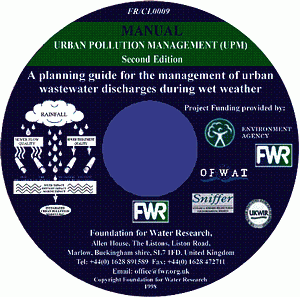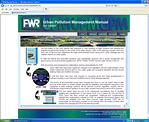 UPM1 - 1995 |
The first edition of the UPM Manual was published in 1994 following a major research and development programme partnership funded by the whole of the water industry. Many of the planning concepts and tools were new at the time and addressed the major environmental issues arising from urban drainage and wet weather impacts on water quality. In 1998 the Manual and associated guidance was substantially reviewed with a similar arrangement and sponsored by the environmental regulators EA, SEPA, DOENI, OFWAT and the water industry in the UK. Both documents were developed as collaborative ventures and published by FWR. |
 UPM2 - 1998 |
Since 1998 there have been significant changes in the legislation with the implementation of the Water Framework Directive and itís new water quality and ecological standards and the revised Bathing Water and Shellfish Directives. In that time there have been step changes in computing power and major developments in software resulting in new improved modelling tools for urban drainage planning . The priority of environmental issues has changed and there is now an urgent need to take account of the impact of climate change, and plan for adaptation and mitigation measures in the upgrading of urban drainage systems. All the partners involved; regulators, industry and the practitioners require that the guidance be up to date, remains best practice and is fit for purpose. |
 UPM3 - 2012 |
This new edition takes account of the widespread consultations and, to facilitate updating and management, is web based. At its core it retains the look and feel of UPM2 which has been revised and streamlined. Additional and complementary material from organisations external to FWR, for example Environment Agency and CIWEM, are available from the 'Other Sources' page provided. FWR has no responsibility for information provided on the external sites. All content of these sites remains the copyright and IPR of the external provider. |
|
| UPM3.1 - 2018 | Section 2.5 Standards for protecting shellfish waters and Section 5, Construct UPM Tools, substantially updated to recognise increasing power of modelling tools. |